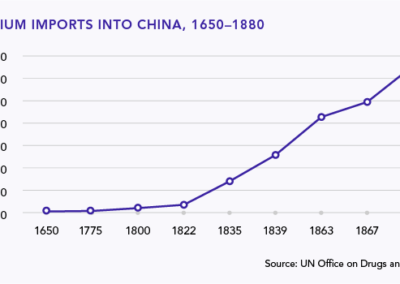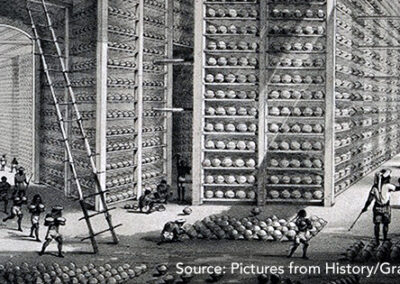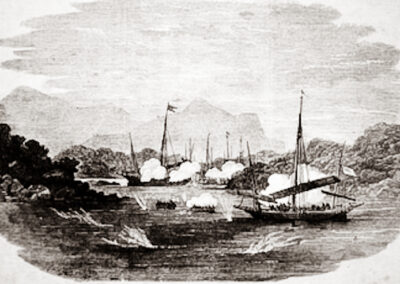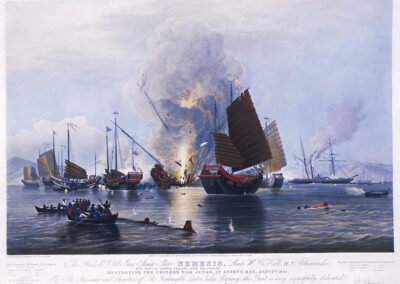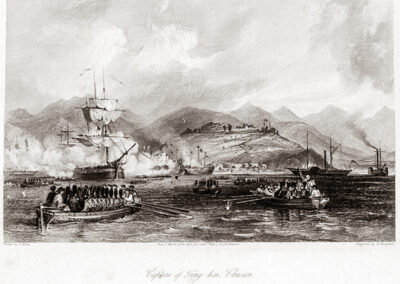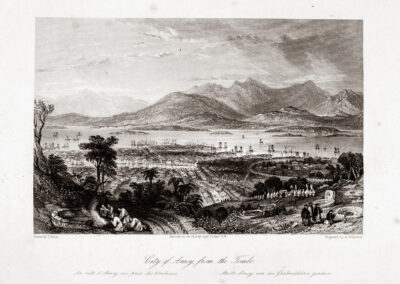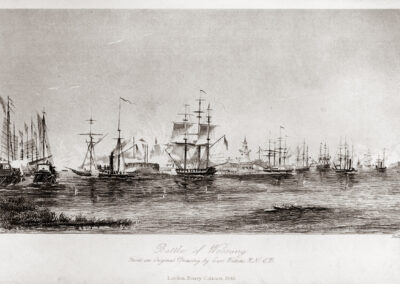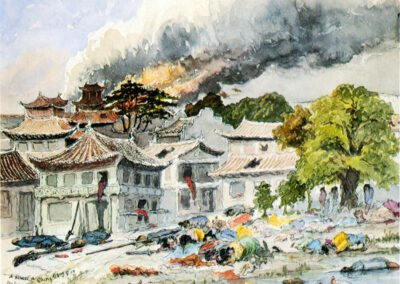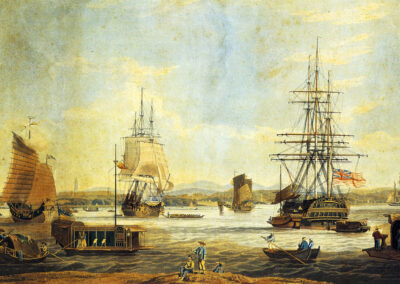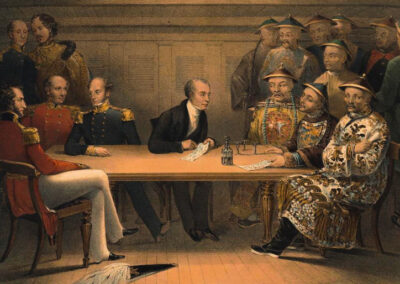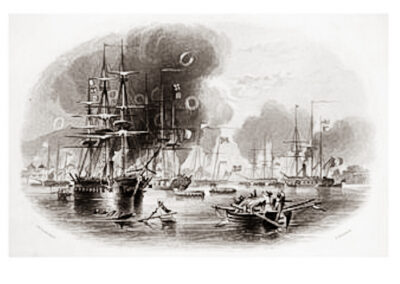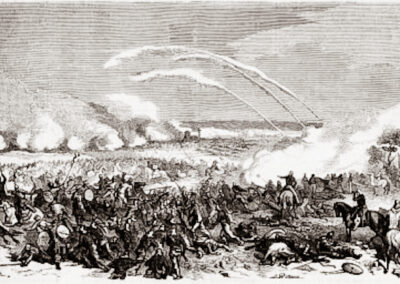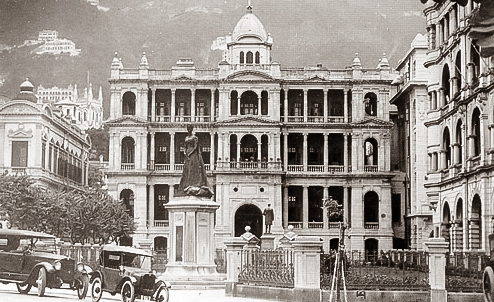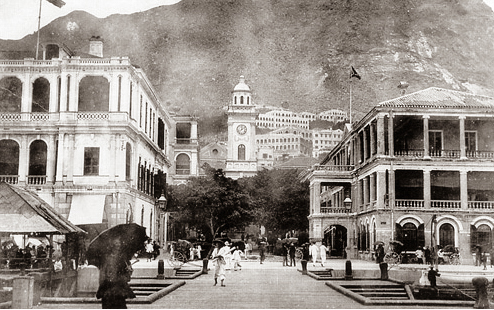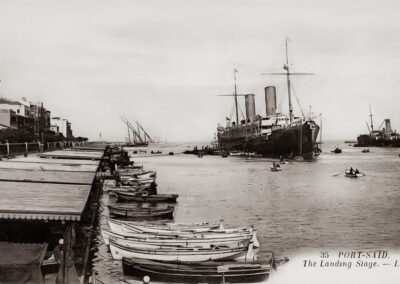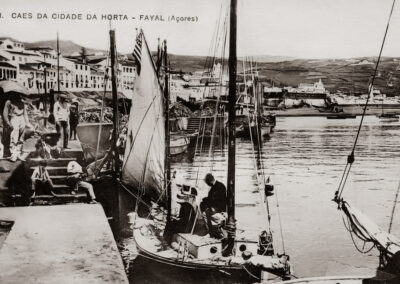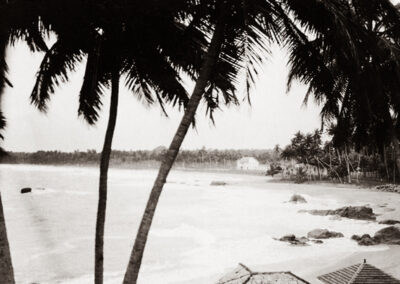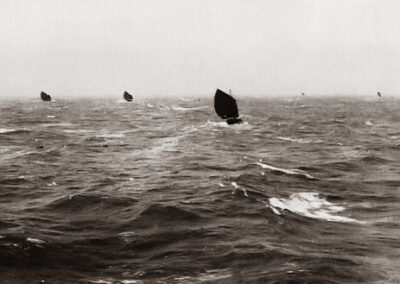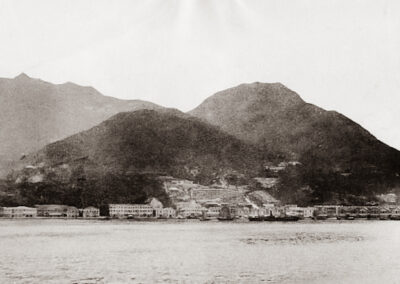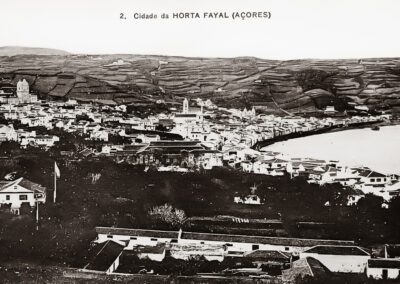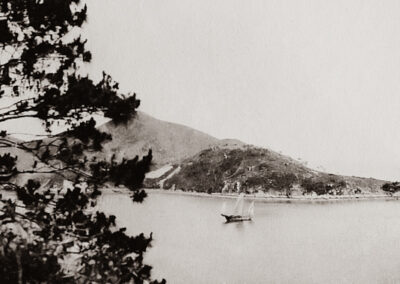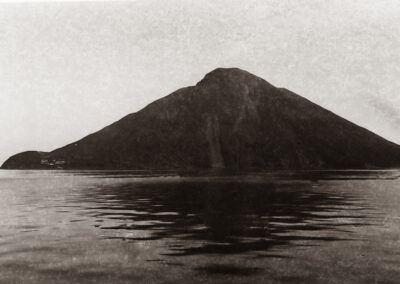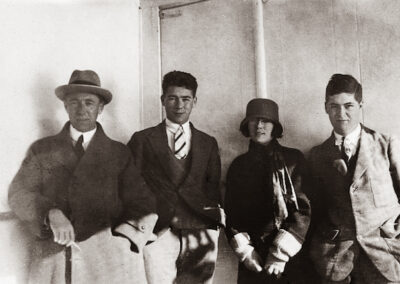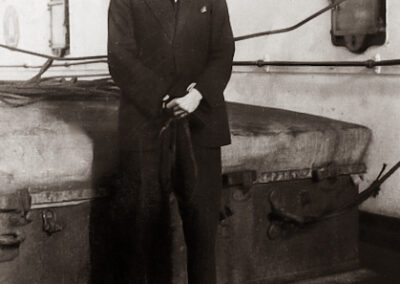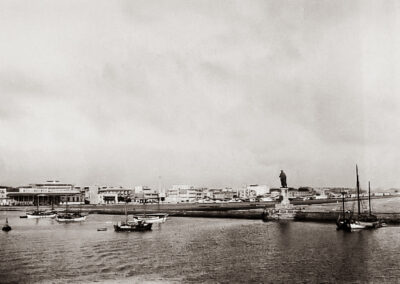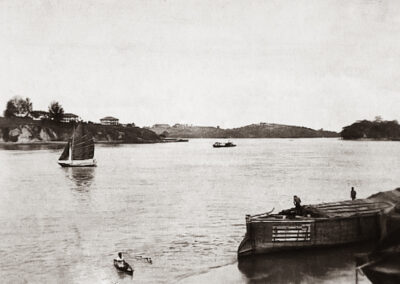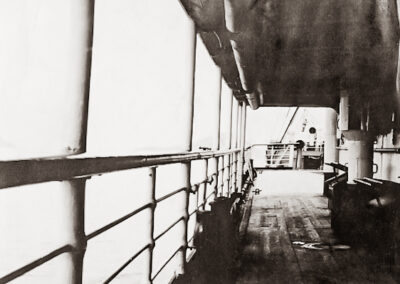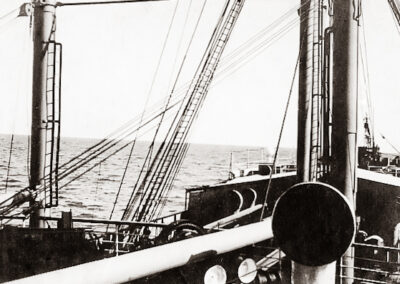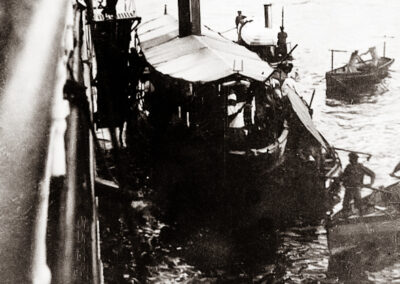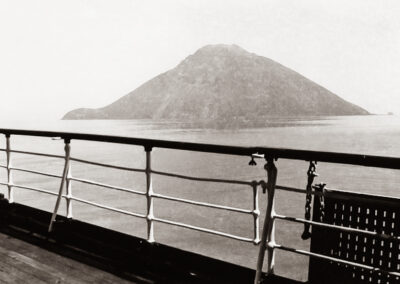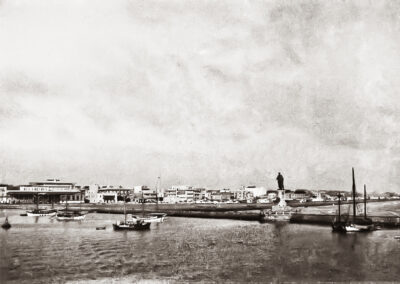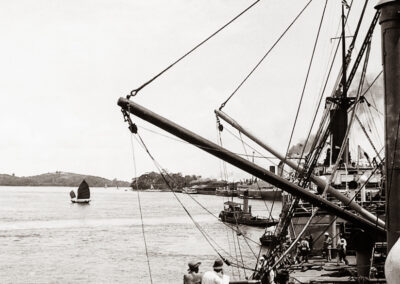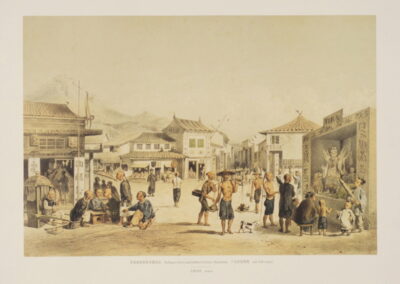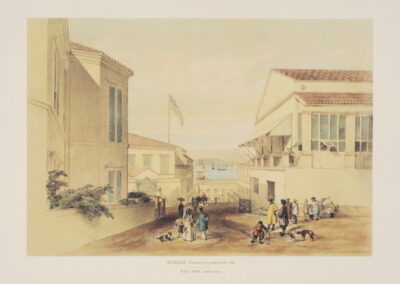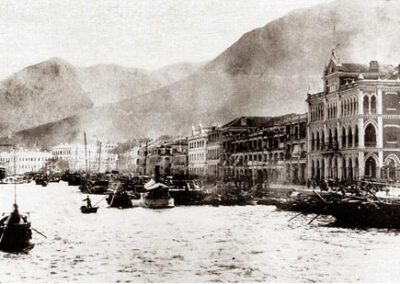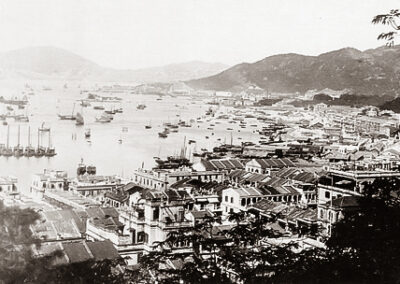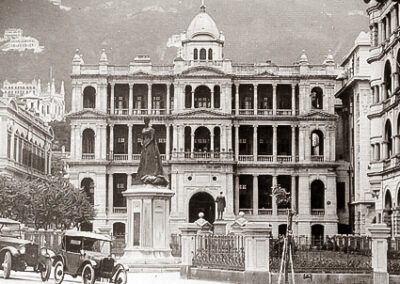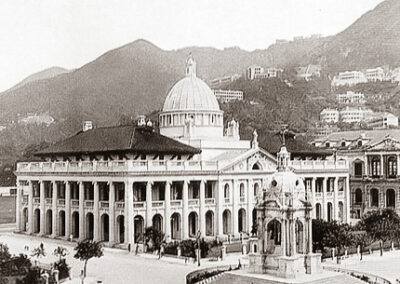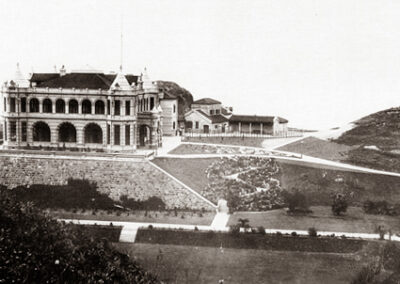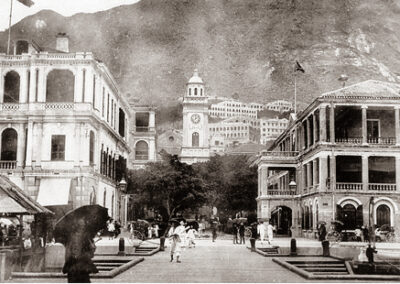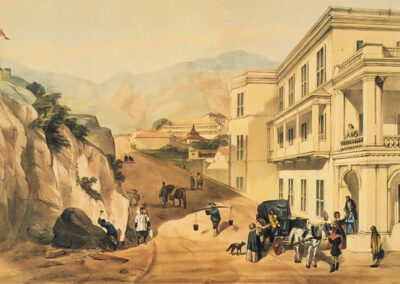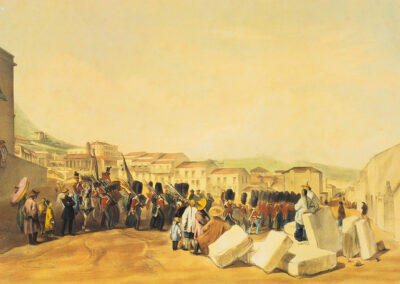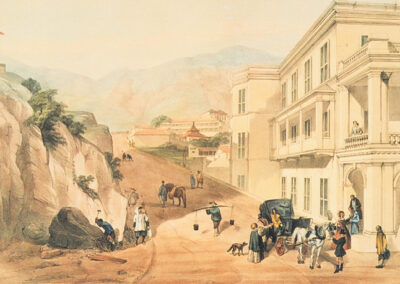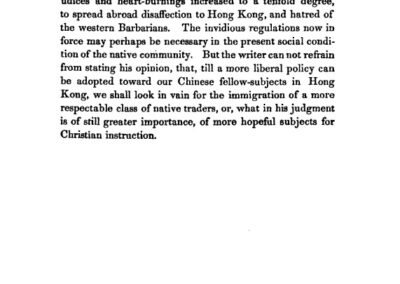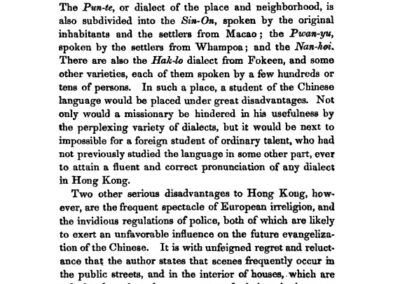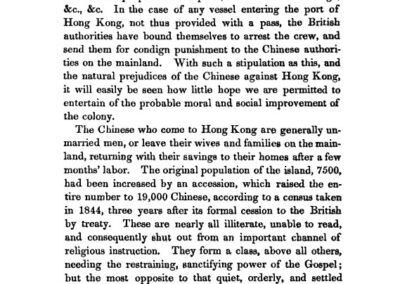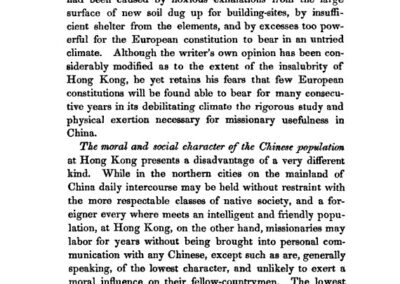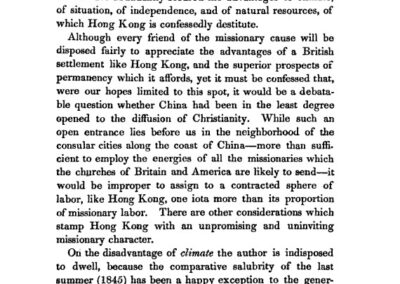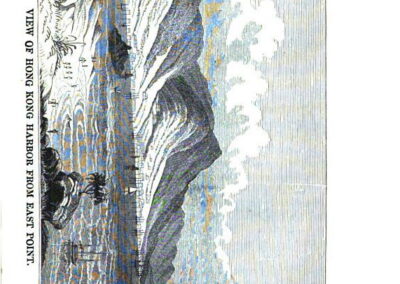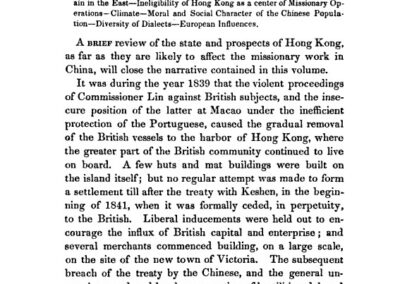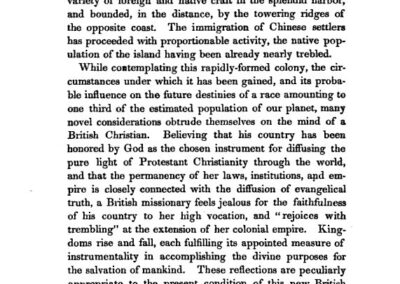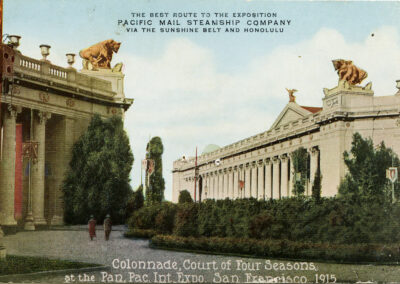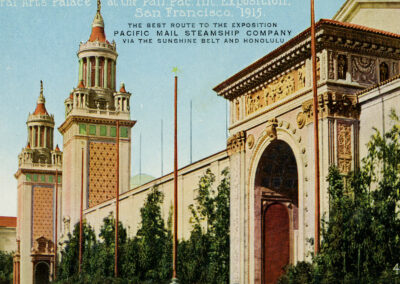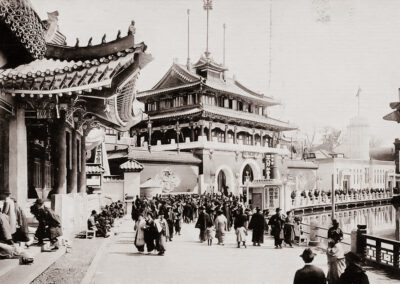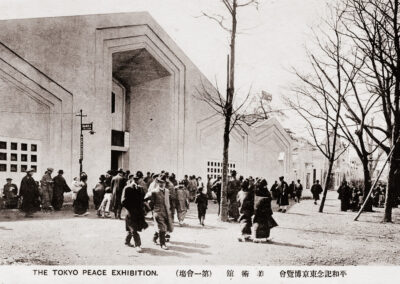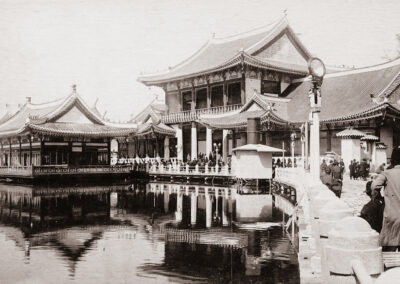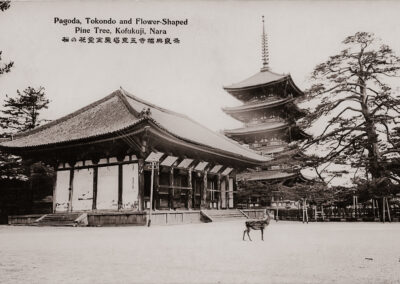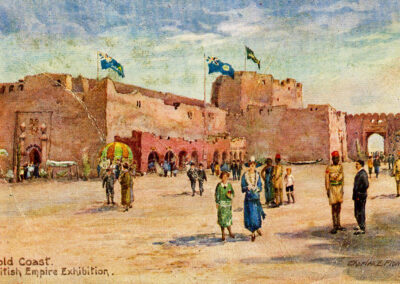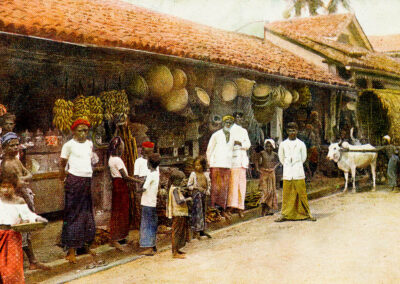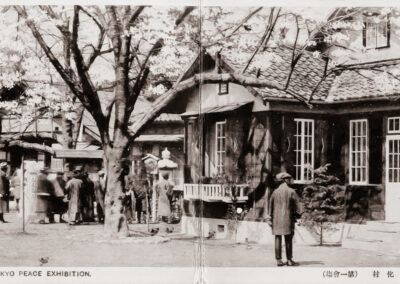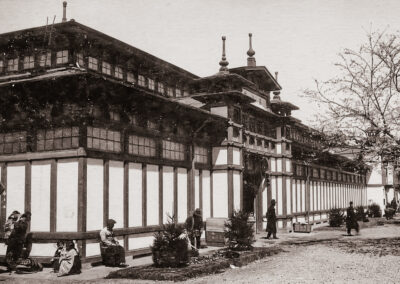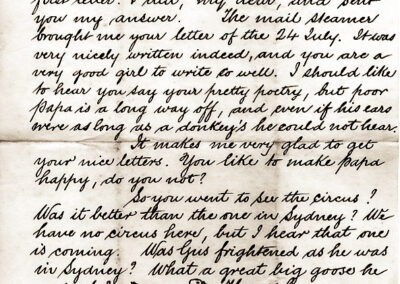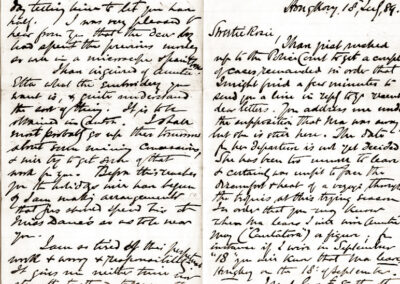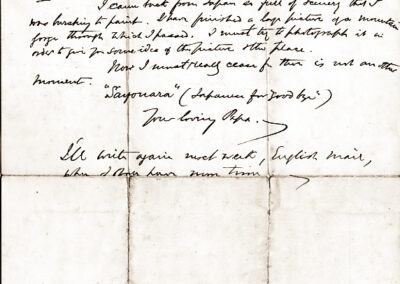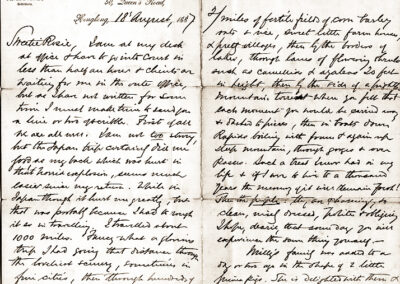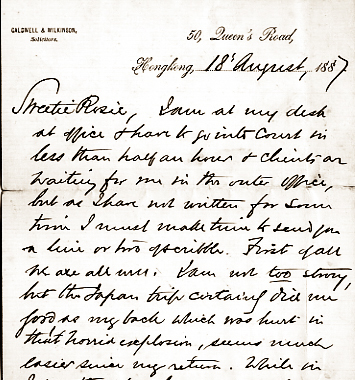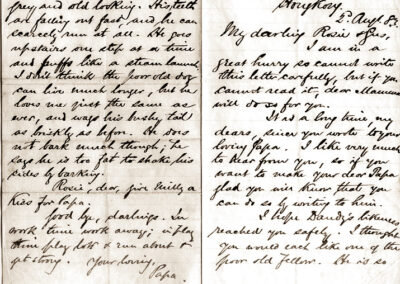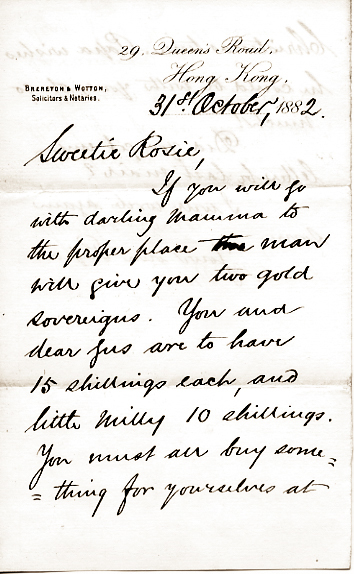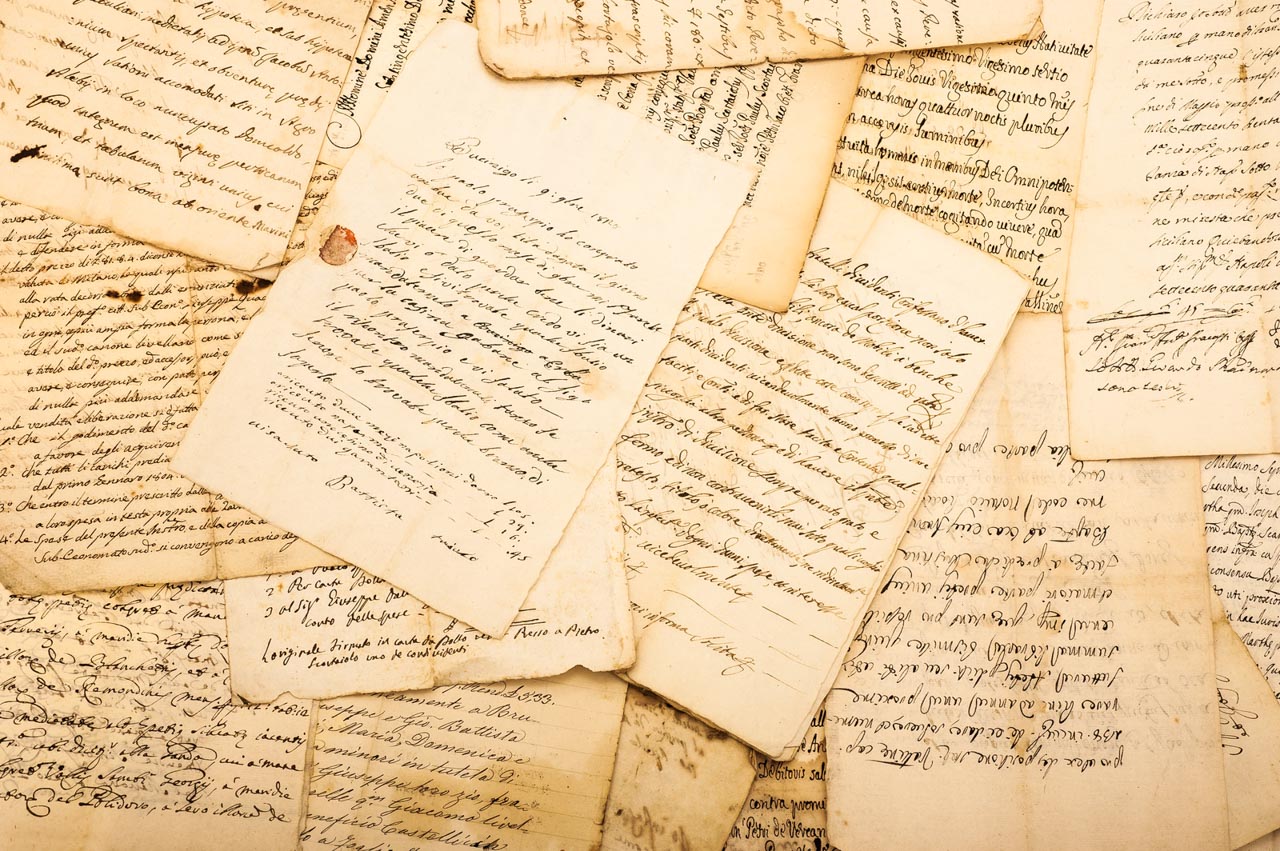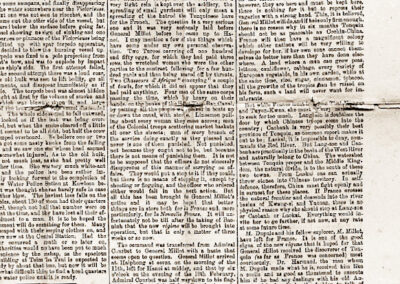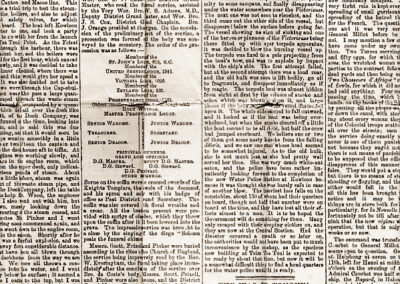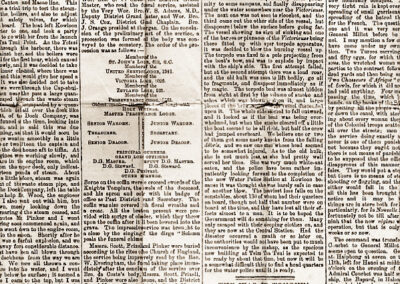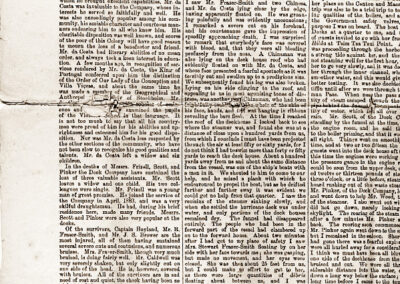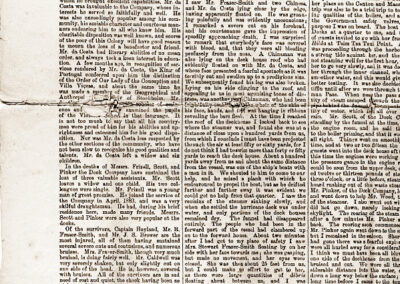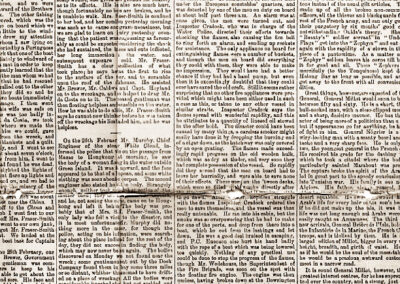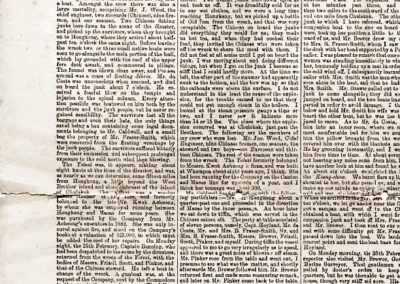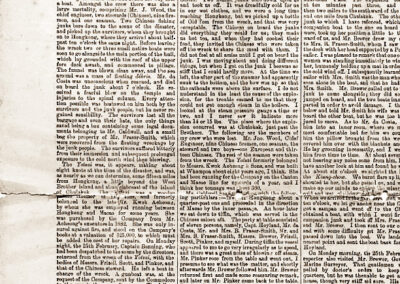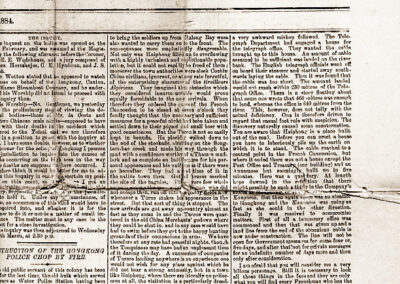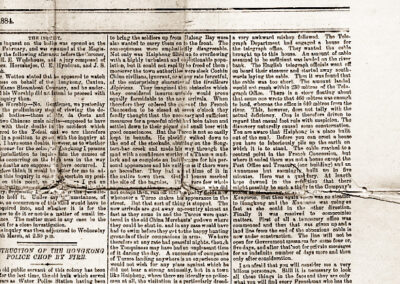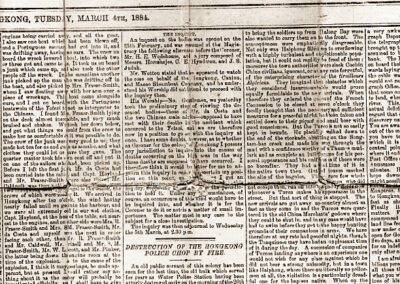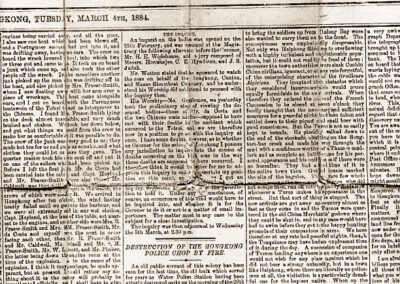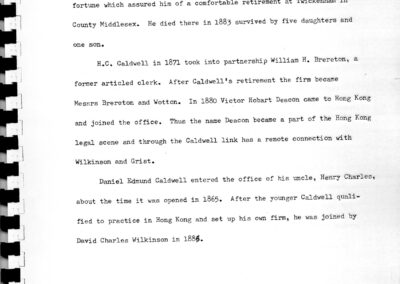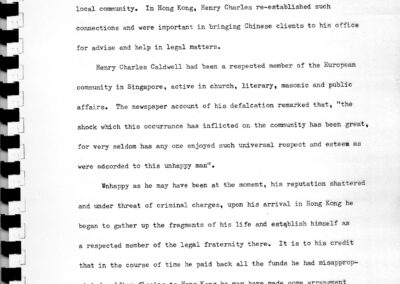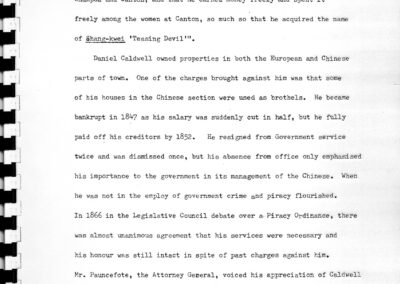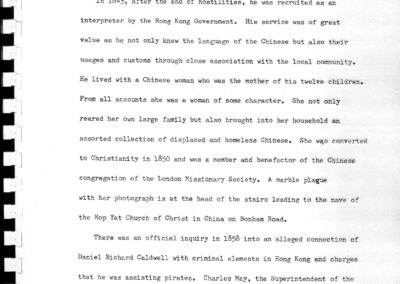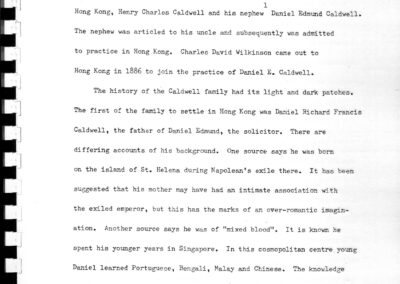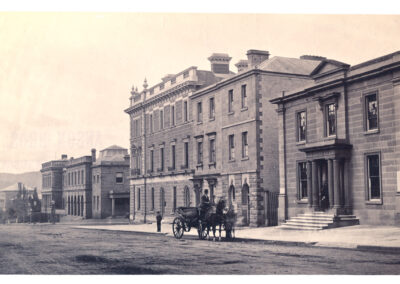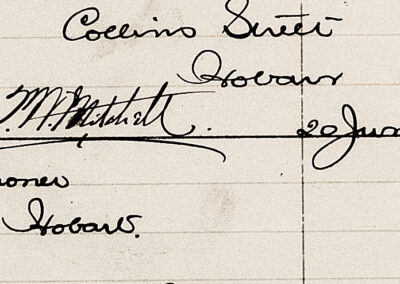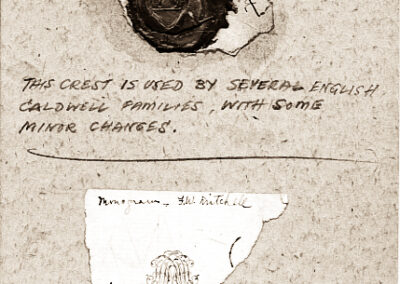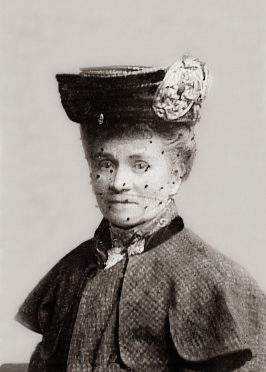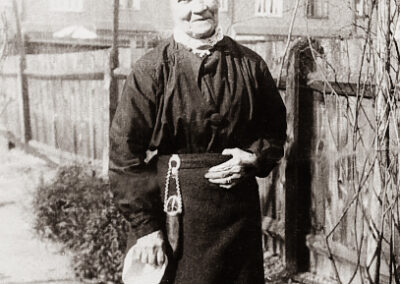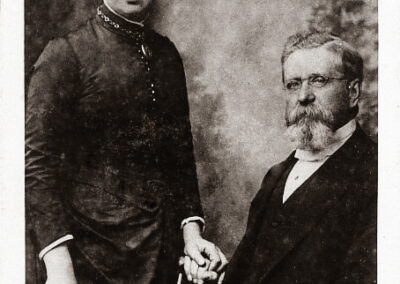
Archive Canada: 1925-Present
All archives on family in CanadaThe Opium Trade
China Controls Trade
There was, however, a catch. China had long been distrustful of foreigners . To control their influence, the Chinese government limited foreign trade to specified ports in South China, in large measure, Canton. Further, Chinese goods had to be be purchased with silver and trading for foreign goods was prohibited.
The government of the day was flummoxed. The Chinese had never expressed any interest in western made goods. They had no use for them, preferring instead, goods made by their time-honoured methods.
A Diabolical Scheme
The idea was to grow, transport and sell opium to the Chinese under the radar of the Chinese government, over time, generate a large population of opium addicts and require payment for the opium in silver. The silver could then be used to purchase luxury goods for sale in Britain.
The Opium Wars
First Opium War
The British, by far the major source of opium, demanded compensation and the right to trade freely. China rejected the claim, arguing that the British actions were illegal and thus, the opium was subject to confiscation by law — an entirely supportable position under international law, both then and now. Yet Britain ignored its own fundamental principle of Rule By Law, for it did not serve its interests. Instead, it opted for ‘gunboat diplomacy.’ For three years, from 1839 to 1842, Chinese and British militaries clashed.
Second Opium War
After the Treaty of Nanjing, the opium trade flourished.
Third Opium War
From 1910 until the devastating earthquake of 1923, the Bruce family maintained two households, one in Yokohama, Japan where Sydney Bruce worked as an accountant and one in South London, England where the children took their schooling. For most of their childhood the five children had only infrequent visits with their father and even their mother, as they generally boarded out.
The Canton Trade System
From 1910 until the devastating earthquake of 1923, the Bruce family maintained two households, one in Yokohama, Japan where Sydney Bruce worked as an accountant and one in South London, England where the children took their schooling. For most of their childhood the five children had only infrequent visits with their father and even their mother, as they generally boarded out.
Hong Kong: A Spoil of War
From 1910 until the devastating earthquake of 1923, the Bruce family maintained two households, one in Yokohama, Japan where Sydney Bruce worked as an accountant and one in South London, England where the children took their schooling. For most of their childhood the five children had only infrequent visits with their father and even their mother, as they generally boarded out.
Scenes of Early Hong Kong
From 1910 until the devastating earthquake of 1923, the Bruce family maintained two households, one in Yokohama, Japan where Sydney Bruce worked as an accountant and one in South London, England where the children took their schooling. For most of their childhood the five children had only infrequent visits with their father and even their mother, as they generally boarded out.
Accounts of Early Hong Kong
From 1910 until the devastating earthquake of 1923, the Bruce family maintained two households, one in Yokohama, Japan where Sydney Bruce worked as an accountant and one in South London, England where the children took their schooling. For most of their childhood the five children had only infrequent visits with their father and even their mother, as they generally boarded out.
Daniel RF Caldwell
From 1910 until the devastating earthquake of 1923, the Bruce family maintained two households, one in Yokohama, Japan where Sydney Bruce worked as an accountant and one in South London, England where the children took their schooling. For most of their childhood the five children had only infrequent visits with their father and even their mother, as they generally boarded out.
Piracy, Daniel & the British Navy
From 1910 until the devastating earthquake of 1923, the Bruce family maintained two households, one in Yokohama, Japan where Sydney Bruce worked as an accountant and one in South London, England where the children took their schooling. For most of their childhood the five children had only infrequent visits with their father and even their mother, as they generally boarded out.
Daniel RF’s Family
From 1910 until the devastating earthquake of 1923, the Bruce family maintained two households, one in Yokohama, Japan where Sydney Bruce worked as an accountant and one in South London, England where the children took their schooling. For most of their childhood the five children had only infrequent visits with their father and even their mother, as they generally boarded out.
Daniel Edmund Caldwell
From 1910 until the devastating earthquake of 1923, the Bruce family maintained two households, one in Yokohama, Japan where Sydney Bruce worked as an accountant and one in South London, England where the children took their schooling. For most of their childhood the five children had only infrequent visits with their father and even their mother, as they generally boarded out.
Transcripts of Letters
Disappeared
By the late 1880s Daniel seemed to be really struggling with his law practice, not from a lack of work for he must have had all the clients he could handle. Indeed, Daniel’s decision to take on a partner suggests he was becoming overwhelmed with the work. Worse, his letters to his family suggest he hated his job with its never-ending shuffling of paper and long waits in court.
Reading between the lines of his letters suggests two more things about Daniel: 1. he was under financial pressure with the expense of keeping up two households — one in Hong kong, the other in England. To lessen the burden, he moved to a a smaller house in Hong Kong 2. I believe Daniel was lonely. The only letters we have from Daniel are those he wrote to his children. They are filled with affection and genuine caring for the children and leave us with the unmistakable impression that he misses them terribly. What we do not know is the nature of Daniel’s relationship with his wife, Mary. We have no letters from her nor any to her. Could it be that the extensive time and distance between them led to a parting of the ways?
The bottom line for me is that Daniel was very probably lonely, perhaps desperately lonely. Perhaps as well, he found himself boxed into a life he deplored. His children were young and required support and a good education. And to leave Hong Kong and start all over again building a practice in London was financially impossible and emotionally un-do-able. If his debts worsened to the point of insolvency, he faced debtor’s prison, shame and a loss of professional credibility from which he would never recover. Unlike his father, who handily survived debtor’s prison because he was so essential to the running of the colony, Daniel Edmund was replaceable.
On May 30, 1891, Daniel was due in court on a routine matter. He never showed. In fact, he was never seen again, not in Hong Kong or anywhere else. Daniel simply disappeared. Regrettably, the trust funds for the law practice disappeared with him. Did Daniel borrow money from the wrong people? Did he start a new life in the bowels of China? Did he make his way to Britain and live in the shadows near his family. Did my great grandfather, Daniel Edmund Caldwell, commit suicide?
Rose Mary Caldwell (See also The Bruces)
From 1910 until the devastating earthquake of 1923, the Bruce family maintained two households, one in Yokohama, Japan where Sydney Bruce worked as an accountant and one in South London, England where the children took their schooling. For most of their childhood the five children had only infrequent visits with their father and even their mother, as they generally boarded out.

